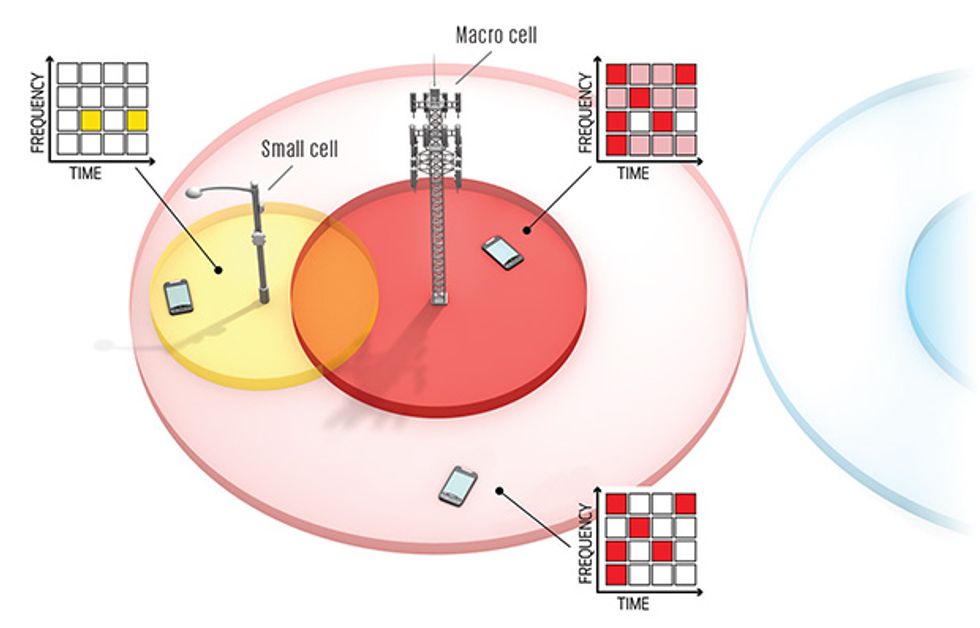
Long-term evolution (LTE), the wireless standard behind today’s top-of-the-line smartphones and tablets, was never meant to be the end of the road for fourth-generation (4G) mobile networks.
And now, just a few years after the first LTE networks went live, operators are beginning to upgrade it to allow for more data capacity and more advanced applications, such as high-definition video.
In June, the South Korean operator SK Telecom Co. announced it had launched the “world’s first LTE-Advanced service through smartphones.” A month later, its competitor LG Uplus Corp. introduced its own LTE-A services. At least 13 other network operators, including AT&T, Japan’s NTT DoCoMo, and Sweden’s Telenor, have promised commercial LTE-A rollouts.
These networks will certainly beat regular old LTE. SK Telecom, for instance, claims peak download rates of 150 megabits per second—double the speed of its LTE network. “It’s a major achievement,” says Lingjia Liu, a wireless expert at the University of Kansas, who helped develop the LTE-A standard.
Technically, LTE-A encompasses a suite of technologies that the International Telecommunication Union has crowned “true 4G.” When fully implemented, it can achieve download speeds of up to 1 gigabit per second for stationary devices, such as tablets in a café, and up to 100 Mb/s for real mobile broadband, such as for tablets in cars or trains.
And LTE-A is about more than just speed. It includes new transmission protocols and multiple-antenna schemes that will enable smoother handoffs between cells, reduce interference at their edges, and stuff more bits per second into a single hertz of spectrum. The result will be higher capacity, more consistent connections, and cheaper data.
But operators won’t build out all of that at once. Rather, they’ll order technologies from the menu as they’re needed. Operators such as SK Telecom that now claim to have LTE-A networks or plans are really talking about a single menu item: carrier aggregation.
This core LTE-A feature stitches together frequency channels, or carriers, that reside in different parts of the radio spectrum. Previously, if an operator wanted to provide up to 20 megahertz of bandwidth to a smartphone, it needed a contiguous block of frequencies 20 MHz wide. Such wide swaths of spectrum, however, are hard to come by. Using LTE-A, SK Telecom combined two separate 10-MHz-wide carriers at 800 MHz and 1.8 gigahertz into one 20-MHz-wide carrier. Without LTE-A, those two carriers could have provided only up to 10 MHz to each customer.
One reason operators are starting with carrier aggregation in the iterative march toward LTE-A is that it provides the biggest performance gain, says Sang-min Lee, a senior manager at SK Telecom’s R&D center in Seoul. LTE-A allows operators to combine up to five carriers as wide as 20 MHz each for a maximum bandwidth of 100 MHz—five times as much bandwidth as LTE can support.
One of the next LTE-A technologies operators plan to deploy will help alleviate network congestion. Like many operators, SK Telecom has begun rolling out small cells—compact base stations that can be overlaid on a traditional “macro” network to expand data capacity in congested urban centers. “In two years, small cells will be a major part of our network,” Lee says. But as operators cram more and more cells into the same spaces, they will have to find ways to lessen interference.
One solution LTE-A offers is a transmission protocol called enhanced inter-cell interference coordination, or eICIC. It builds on the LTE protocol ICIC, which enables a macro cell to reduce transmission power at certain frequencies at certain times, thereby avoiding interference with its neighbors. Using eICIC, the macro cell can further reduce signal power at particular times, allowing small cells inside its coverage area to expand their transmission range [see illustration]. This dynamic coordination would let more customers link to the small cells while avoiding interference from the macro cell.
Lee says SK Telecom will begin using eICIC and other interference-reducing techniques next year. Other operators will surely follow. But now that they’ve already proclaimed the arrival of LTE-Advanced, what will they call these next advances?
